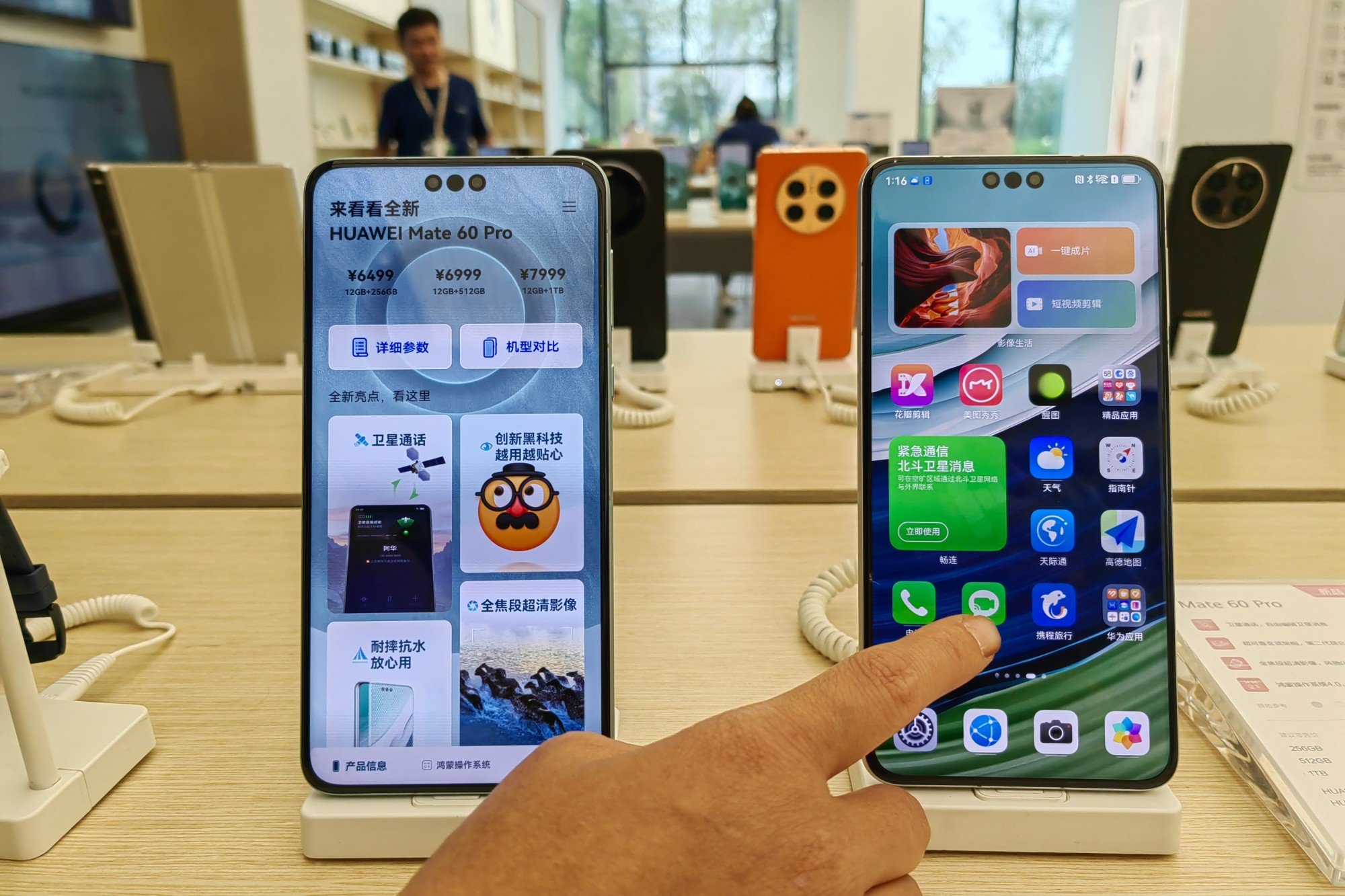
Apple dominates global premium smartphone market in 2023, but Huawei gains ground on the back of its new 5G handsets
- Apple remained the world’s top vendor of premium smartphones in 2023, with a 71 per cent market share, according to research firm Counterpoint
- The US firm’s lead, however, declined year on year amid Huawei’s 5G comeback with its Mate 60 series and the gains made by Samsung’s foldable phones
The global premium smartphone market, where handsets are priced from US$600, saw Apple remain the “undisputed leader” last year with a dominant 71 per cent share, according to the latest industry report released on Tuesday by Counterpoint Research.
Samsung retained the global No 2 spot in the premium segment with a share of 17 per cent, compared to 16 per cent in 2022. Still, No 3 Huawei captured more new ground year on year with a 5 per cent share, up from 3 per cent in 2022, according to the Counterpoint report.

The latest market data shows the resilience of the premium segment, despite the projected decrease in the overall global smartphone market in 2023 – global handset shipments are forecast to hit their lowest level in almost a decade with a 5 per cent decline, according to an earlier Counterpoint report.
The premium segment, meanwhile, was expected to account for nearly one-fourth of global smartphone market sales and 60 per cent of the industry’s revenue in 2023. Counterpoint data shows that the so-called ultra-premium segment, where smartphones cost more than US$1,000, accounted for one-third of total premium handset sales last year.
Over the past few years, the premium segment has emerged as a growth area in the otherwise weak worldwide smartphone market. Counterpoint projected the premium segment sales share to triple to 24 per cent in 2023, compared to 6 per cent in 2016.
“There has been a shift in consumer buying patterns in the smartphone market,” Counterpoint senior analyst Varun Mishra said in the premium segment report. “Considering the importance a smartphone holds, consumers are willing to spend more to get a high-quality device that they can use for a longer period.”
“Owning the latest and greatest flagships has also become a status symbol for many consumers, especially in emerging markets where they are jumping directly from the mid-price band to the premium band,” Mishra said. “Further, these devices are increasingly becoming more affordable due to promotion seasons and financing options.”

